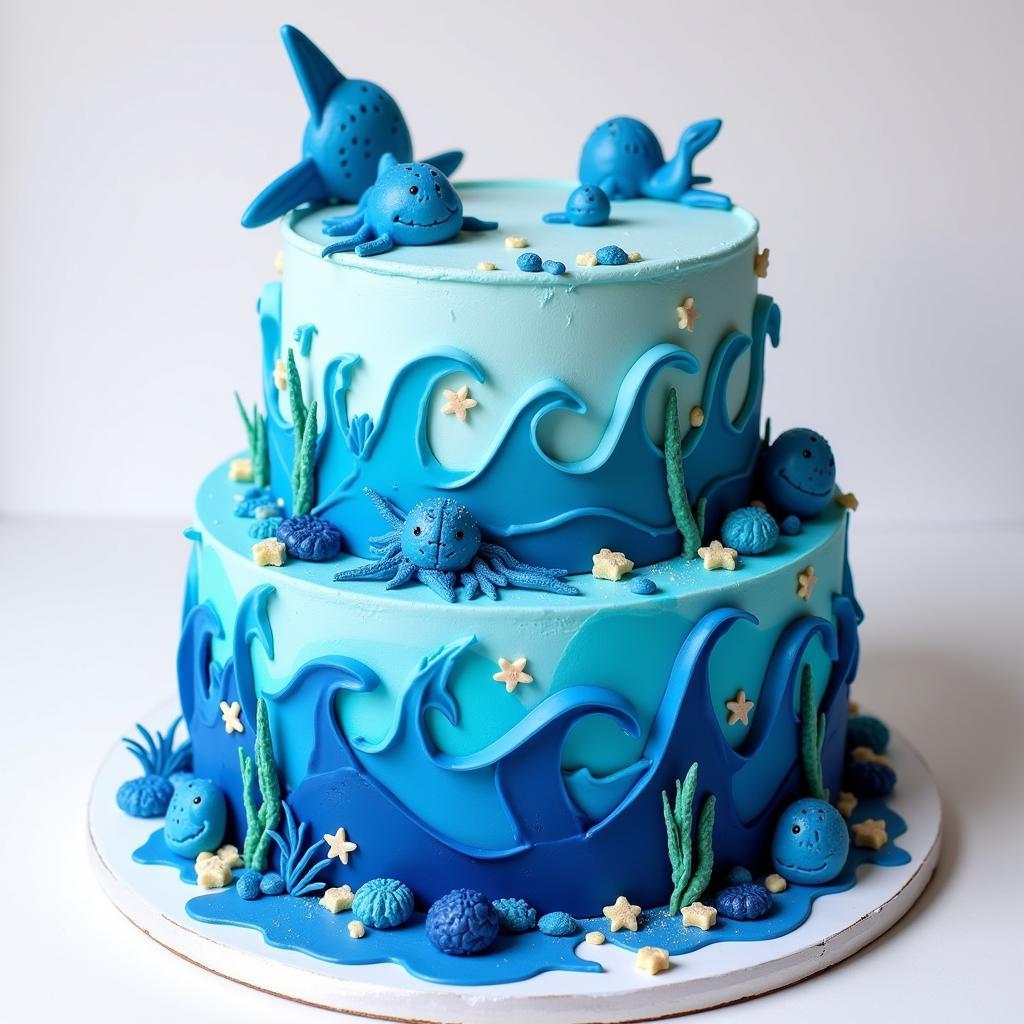Blue Gel Food Coloring is a kitchen staple for anyone who loves to add a vibrant touch to their culinary creations. From the palest sky blue to the deepest ocean hues, this versatile coloring agent opens up a world of possibilities for bakers, confectioners, and home cooks alike. Whether you’re frosting a cake, whipping up meringue, or creating intricate sugar decorations, understanding the nuances of blue gel food coloring can elevate your dishes from ordinary to extraordinary. Let’s dive into the world of blue and discover its secrets!
Choosing the Right Blue Gel Food Coloring
Choosing the right blue gel food coloring can be a bit daunting, especially with the vast array of brands and shades available. Look for food coloring gels that are specifically designed for intense color payoff and a smooth consistency. Some brands offer a wide spectrum of blues, from vibrant turquoise to deep navy, allowing for precise color customization. It’s helpful to have a gel food coloring set on hand so you can experiment with different shades and create your own unique color palette. Consider the intensity of color you desire and the type of food you’re coloring. Certain gels are better suited for oil-based applications while others work best in water-based mixtures.
Achieving the Perfect Shade of Blue
Getting the perfect shade of blue can sometimes feel like a science experiment. Start with a small amount of blue gel food coloring and gradually add more until you achieve the desired intensity. Remember, a little goes a long way with gel coloring, so it’s always best to err on the side of caution and add more slowly. White-based frostings and batters will showcase the blue most vibrantly, while darker bases might require more coloring to achieve the same effect. Don’t be afraid to experiment and have fun with it! You can even combine blue with other colors, like yellow to create green, or red for purple. If you’re looking for a pastel shade, try adding a touch of lavender food coloring to soften the blue.
Understanding the Impact of Ingredients
Different ingredients can affect the final color of your blue-hued creations. The pH levels in certain foods can cause slight variations in the shade of blue, so it’s important to be mindful of this. For instance, adding blue gel food coloring to a batter with a higher acidity might result in a slightly purplish tint. Similarly, the presence of fats and oils can also influence how the color appears in your final product. Understanding these nuances will allow you to anticipate and adjust your coloring techniques accordingly.
Tips and Tricks for Using Blue Gel Food Coloring
- Use toothpicks: For precise application, use a toothpick to add small amounts of gel coloring.
- Knead into dough: When coloring dough, knead the gel in thoroughly for even distribution.
- Avoid overmixing: Overmixing can sometimes lead to a less vibrant color.
“When working with blue gel food coloring, remember that less is more,” advises renowned pastry chef, Amelia Dubois. “Start with a tiny amount and gradually increase until you achieve the desired intensity. This approach prevents over-coloring and ensures a vibrant, even hue.”
Troubleshooting Common Issues
Sometimes, despite our best efforts, the blue doesn’t quite turn out as planned. If your blue appears dull or muted, try adding a touch more white to brighten it up. If it’s too dark, you might need to start over with a fresh batch. Remember, practice makes perfect!
Exploring Creative Applications of Blue Gel Food Coloring
Blue gel food coloring is incredibly versatile and can be used in countless applications beyond just cakes and frosting. From vibrant blue candies to mesmerizing cocktails, the possibilities are endless. You can even use it to create unique tie-dye effects in baked goods or add a pop of color to homemade playdough. If you’re looking for a reliable gel, consider a Chefmaster food coloring gel. It’s known for its vibrant colors and easy application.
Blue Food Coloring for Special Occasions
Blue is a popular choice for themed parties and celebrations. Whether you’re creating a winter wonderland cake with snowy blue frosting or blue food candy for a baby shower, blue gel food coloring can help you achieve the perfect festive touch. Consider color mixing food coloring to create custom shades of blue for specific themes.
 Ocean-Themed Cake Decorated with Blue Gel Food Coloring
Ocean-Themed Cake Decorated with Blue Gel Food Coloring
Conclusion
Blue gel food coloring is a powerful tool for adding a splash of color and creativity to your culinary creations. By understanding its properties and mastering a few simple techniques, you can unlock a world of vibrant possibilities in the kitchen. So, grab your blue gel food coloring and start experimenting!
FAQ
-
How much blue gel food coloring do I need to use? Start with a small amount and gradually add more until you reach the desired shade.
-
Can I mix blue gel food coloring with other colors? Yes, you can mix blue with other colors to create a wide range of shades.
-
What should I do if my blue frosting is too dark? Try adding more white frosting to lighten the shade.
-
Is blue gel food coloring safe to consume? Yes, as long as it’s FDA-approved.
-
Can I use blue gel food coloring in hot liquids? Yes, gel food coloring is typically heat-stable.
-
How do I store leftover blue gel food coloring? Store it in a cool, dark place away from direct sunlight.
-
Where can I buy blue gel food coloring? You can find it at most grocery stores, craft stores, and online retailers.
If you need further assistance, please contact us at Phone Number: 02437655121, Email: minacones@gmail.com or visit our address: 3PGH+8R9, ĐT70A, thôn Trung, Bắc Từ Liêm, Hà Nội, Việt Nam. We have a 24/7 customer service team.